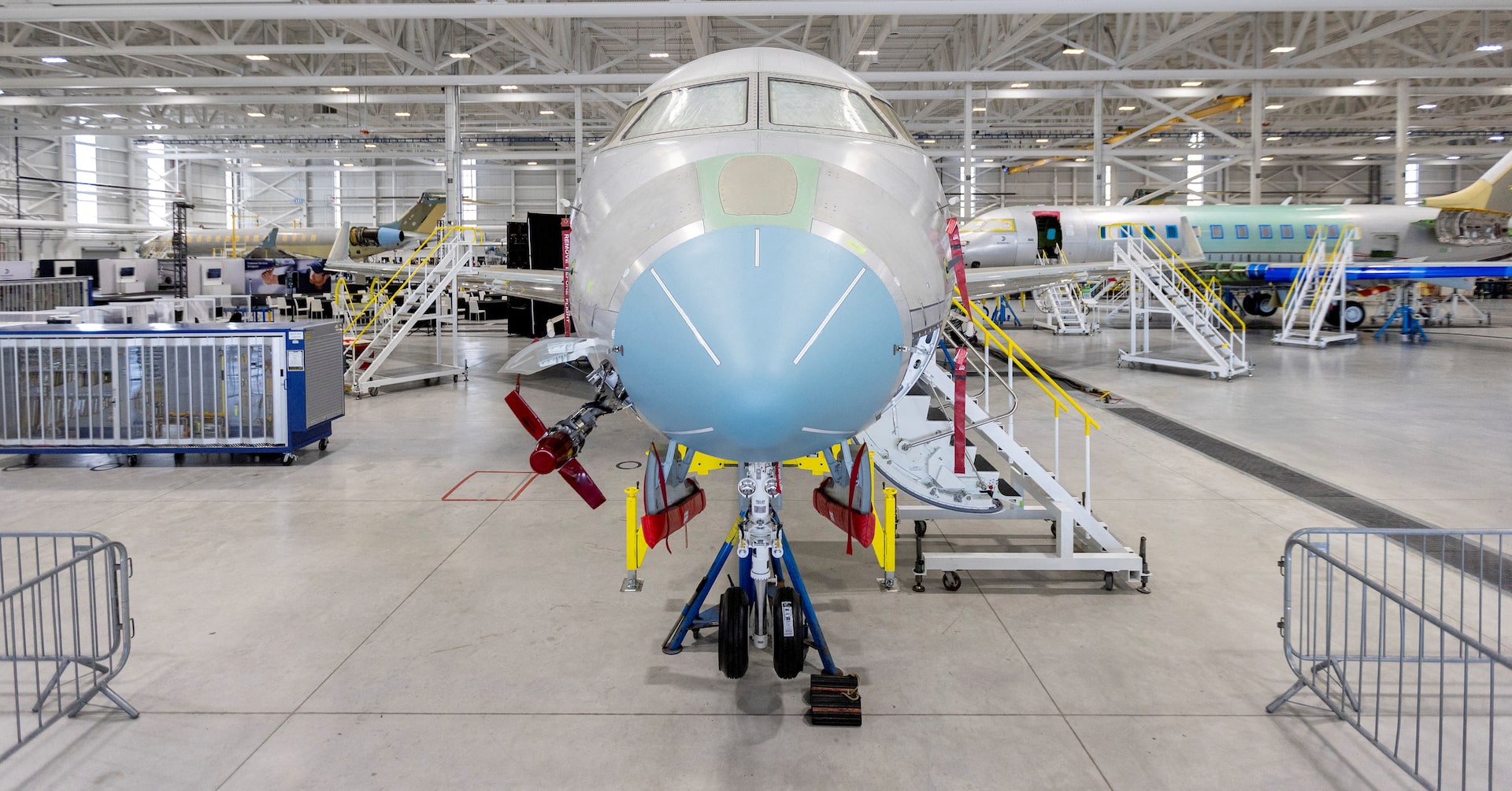Sky-High Stakes: How Trade Tariffs Are Turbulence for Business Aviation
Business
2025-03-13 10:02:47Content

Global trade tensions are sending ripples through the business aviation industry, as mounting tariffs spark a strategic scramble among jet buyers. Facing potential price hikes and increased manufacturing costs, aviation professionals are adopting creative strategies to mitigate the financial impact of international trade disputes.
Savvy aircraft purchasers are now racing to expedite deliveries and negotiating sophisticated contract provisions that shield them from escalating duties. Industry experts warn that the ongoing tariff battles could significantly inflate the cost of critical planemaking materials, forcing manufacturers and buyers to adapt quickly to an increasingly complex global marketplace.
The current trade landscape is compelling business jet buyers to become more proactive, seeking innovative ways to protect their investments and maintain financial predictability in an uncertain economic environment. As tensions continue to simmer between major trading nations, the aviation sector remains on high alert, carefully monitoring how these geopolitical maneuvers might reshape the future of aircraft procurement.
Global Trade Tensions Spark Innovative Strategies in Business Aviation Procurement
In the ever-evolving landscape of international trade, the business aviation sector finds itself navigating a complex maze of economic challenges, where geopolitical tensions and protectionist policies are reshaping procurement strategies and forcing industry players to adapt with unprecedented creativity and resilience.Navigating Turbulent Economic Skies: A High-Stakes Game of Strategic Adaptation
The Tariff Tango: Reshaping Business Jet Acquisition Dynamics
The implementation of punitive tariffs by major global economies has triggered a profound transformation in how business jet manufacturers and buyers approach international transactions. Sophisticated procurement teams are now developing intricate contractual mechanisms designed to mitigate the financial risks associated with volatile trade environments. These strategies extend far beyond traditional negotiation tactics, representing a nuanced approach to managing economic uncertainty. Manufacturers and buyers are increasingly employing advanced risk mitigation techniques, including dynamic pricing models, flexible delivery schedules, and comprehensive hedging strategies. The complexity of these approaches reflects the sophisticated understanding that modern aviation procurement demands a multifaceted, proactive stance in confronting economic challenges.Material Cost Escalation: The Hidden Challenge in Aviation Manufacturing
The ripple effects of international trade tensions extend deep into the supply chain, particularly impacting raw material costs for aircraft production. Aerospace engineers and procurement specialists are now confronting unprecedented challenges in maintaining cost-effective manufacturing processes while preserving technological innovation and quality standards. Advanced materials such as specialized aluminum alloys, composite structures, and precision-engineered components are experiencing significant price volatility. This economic pressure is compelling manufacturers to explore alternative sourcing strategies, invest in domestic production capabilities, and develop more resilient supply chain architectures that can withstand geopolitical disruptions.Strategic Contract Engineering: A New Frontier in Aviation Procurement
Innovative legal frameworks are emerging as a critical tool for businesses seeking to protect their investments in the business jet market. Procurement teams are developing sophisticated contract clauses that provide financial protection against sudden tariff implementations, currency fluctuations, and unexpected regulatory changes. These contractual innovations represent a sophisticated approach to risk management, transforming traditional procurement models into dynamic, adaptive frameworks that can respond rapidly to changing economic landscapes. The ability to craft such flexible agreements has become a critical competitive advantage in the global aviation marketplace.Technological Innovation as a Response to Economic Uncertainty
The current economic climate is accelerating technological innovation within the business aviation sector. Manufacturers are investing heavily in research and development, seeking to create more efficient, cost-effective aircraft that can provide superior value despite challenging economic conditions. Advanced manufacturing techniques, including additive manufacturing and AI-driven design optimization, are enabling companies to reduce production costs and create more adaptable product lines. These technological breakthroughs represent a strategic response to the economic pressures created by international trade tensions.Global Economic Interdependence: A Delicate Balance
The business jet market serves as a microcosm of broader global economic interactions, highlighting the intricate interdependencies that characterize modern international trade. Each tariff, each regulatory change sends complex ripple effects through interconnected economic systems, demanding unprecedented levels of strategic thinking and adaptability. Procurement professionals must now operate with a holistic understanding of global economic dynamics, recognizing that success requires more than traditional transactional approaches. The ability to anticipate, interpret, and strategically respond to economic shifts has become a critical competency in the contemporary business aviation landscape.RELATED NEWS
Business

Culinary Excitement Arrives: Two Major Dining Destinations Set to Transform Coastland Center Mall
2025-04-09 17:24:32
Business

AI Showdown: Gemini's Rapid Rise Falls Short as ChatGPT and Meta AI Dominate the Digital Battlefield
2025-04-24 18:31:30






